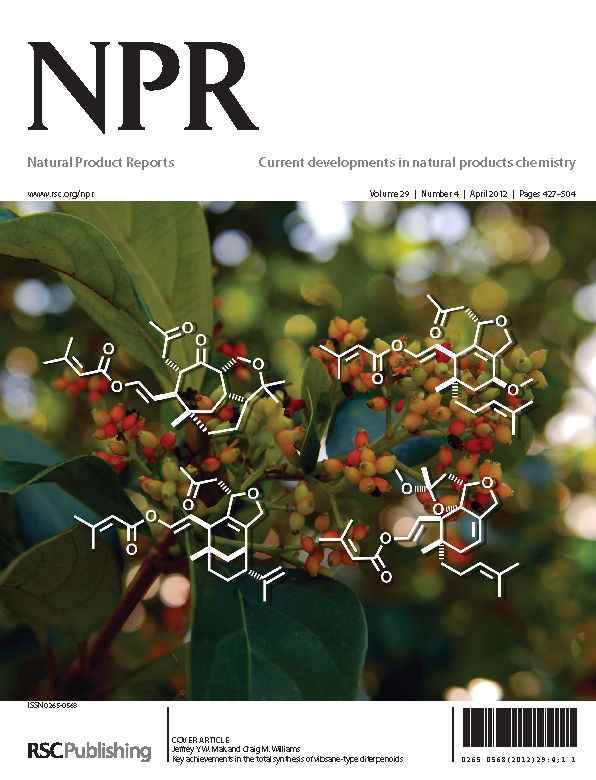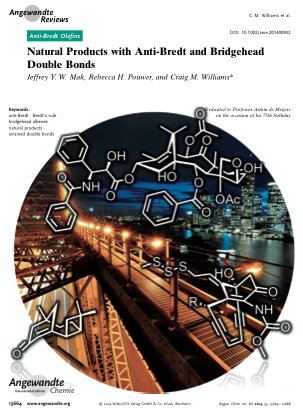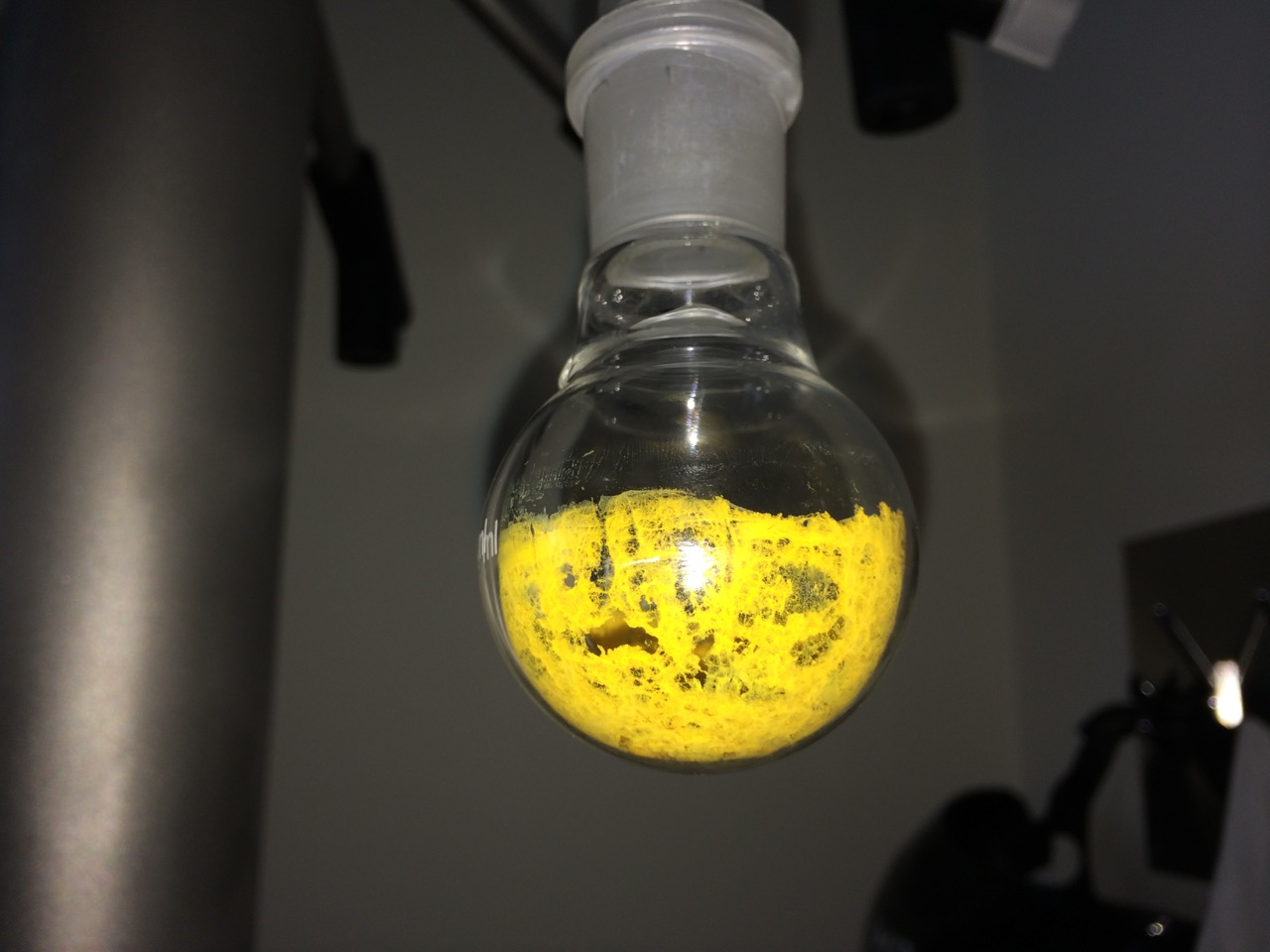Researchers
BACKGROUND
Jeffrey Mak (PhD) is an organic chemist at the Institute for Molecular Bioscience. In his research, he seeks to apply a mechanistic approach to scientific problem solving. His publications cover a range of disciplines such as biological and medicinal chemistry, total synthesis, and physical organic chemistry. In 2017, Dr Mak was selected as a CAS SciFinder Future Leader by the Chemical Abstract Service (a division of the American Chemical Society).
Jeffrey Mak was awarded the Harriett Marks Bursary and a UQ University Medal before undertaking doctorate studies in natural product total synthesis with Prof. Craig Williams. This culminated in the first total synthesis of two caged diterpenes, (−)-neovibsanin G and (−)-14-epi-neovibsanin G. Next, he joined Prof. David Fairlie's group at the Institute for Molecular Bioscience. He is currently active in the fields of chemical biology and drug development. In recent years, his research has particularly focused on mucosal associated invariant T (MAIT) cells, which are a newly characterised subset of immune cells important in antibacterial defence. In 2014, he was part of an Australian team that discovered the identity of the ligands that activate MAIT cells, as published in Nature, playing a key role in the chemical synthesis and characterisation of the unstable and structurally unprecedented ligands (Nature Communications, 2017). In 2018, Dr Mak was chief investigator on a UQ Early Career Researcher Grant for developing new drug leads that target MAIT cells.
Dr Mak has co-supervised eight student projects, and contributes to the undergraduate courses Advanced Organic Chemistry (CHEM3001) and Experimental Chemistry (CHEM2054) . He has also served as an ACS Wikipedia Fellow to systematically improve the chemistry and scientific content on Wikipedia (2018).
Research interests
Mucosal associated invariant T (MAIT) cell ligands
MAIT cells play an important role in antibacterial immune defence. Unlike other T cells, MAIT cells are activated by small heterocyclic molecules. I am interested in using small molecule synthetic chemistry to develop new compounds as research tools for studying MAIT cells. This includes the development of compounds that activate MAIT cells as potential immunostimulants, components of vaccines, and immunotherapeutic agents. However, uncontrolled MAIT cell activation has also been linked to disease, so I am also interested in developing inhibitors of MAIT cell activation as potential anti-inflammatory agents for diseases such as ulcerative colitis and inflammatory bowel disease. These activities contribute to my overall goal of uncovering the physiological roles and harnessing the therapeutic potential of MAIT cells.
Drug design and development against GPCR and enzyme targets
I am interested in developing potent and selective ligands against GPCR and enzyme targets. These are highly collaborative and multidisciplinary projects involving computer aided design, chemical synthesis, in vitro bioassay, and experimental pharmacology. In the Fairlie group, we aim to use our collective expertise to develop drugs as potential treatments for inflammatory disease.
Publications
Underlined indicates equal contribution
Wang H, D’Souza C, Lim XY, Kostenko L, Pediongco TJ, Eckle SEG, Meehan BS, Wang N, Li S, Liu L, Mak JYW, Fairlie DP, Iwakura Y, Gunnersen JM, Stent AW, Godfrey DI, Rossjohn J, Westall GP, Kjer, Nielsen L, Strugnell RA, McCluskey J*, Corbett AJ, Hinks TSC, Chen Z; MAIT cells protect against pulmonary Legionella longbeachae infection, Nature Communications (2018) 9, 3350 [Full-text: Open access]
Kjer-Nielsen L, Corbett AJ, Chen Z, Liu L, Mak JYW, Godfrey DI, Rossjohn J, Fairlie DP, McCluskey J, Eckle SBG* An overview on the identification of MAIT cell antigens, Immunology and Cell Biology (2018) 96, 6 573 [Full-text: Open access]
Varelias A, Bunting MD, Ormerod KL, Koyama M, Olver SD, Straube J, Kuns RD, Robb RJ, Henden AS, Cooper L, Lachner N, Gartlan KH, Lantz O, Kjer-Nielsen L, Mak JYW, Fairlie DP, Clouston AD, McCluskey J, Rossjohn J, Lane SW, Hugenholtz P, Hill GR Recipient Mucosal-Associated Invariant T Cells control GVHD within the colon, Journal of Clinical Investigation (2018) 128, 1919 [Full-text: Open access]
D’Souza C, Pediongco T, Wang H, Scheerlinck J-PY, Kostenko L, Esterbauer R, Stent AW, Eckle SBG, Meehan BS, Strugnell RA, Cao H, Liu L, Mak JYW, Lovrecz G, Lu L, Fairlie DP, Rossjohn J, McCluskey J, Every AL*, Chen Z*, Corbett AJ*; Mucosal-associated invariant T cells augment immunopathology and gastritis in chronic Helicobacter pylori infection, Journal of Immunology (2018) 200, 1901 [Full-text]
Stoermer MJ, Wickramasinghe WA, Byriel KA, Hockless DCR, Skelton BW, Sobolev AN, White AH, Mak JYW, Fairlie DP*; Stereoelectronic effects on dienophile separation influence the Diels-Alder synthesis of molecular clefts, European Journal of Organic Chemistry (2017) 2017, 6793 Very Important Paper [Full-text]
Mak JYW, Xu W, Reid RC, Corbett AJ, Meehan B, Wang H, Chen Z, Rossjohn J, McCluskey J, Liu L*, Fairlie DP*; Stabilising short-lived Schiff base derivatives of 5-aminouracils that activate mucosal-associated invariant T cells, Nature Communications (2017) 8, 14599. [Full-text: Open access]
Keller AN, Eckle SBG, Xu W, Liu L, Hughes VA, Mak JYW, Meehan B, Pediongco Troi, Birkinshaw RW, Chen Z, Wang H, D’Souza C, Kjer-Nielsen L, Gheradin NA, Godfrey DI, Kostenko L, Corbett AJ, Purcell AW, Fairlie DP*, McCluskey J*, Rossjohn J*; Drugs and drug-like molecules can modulate mucosal-associated invariant T cell function, Nature Immunology (2017) 18, 402-411. F1000 Prime, ESI highly cited paper [Full-text]
Yau MK, Liu L, Suen JY, Lim JX, Lohman RJ, Jiang YH, Cotterell AJ, Barry GD, Mak JYW, Vessey DA, Reid RC, Fairlie DP*; PAR2 modulators derived from GB88, ACS Medicinal Chemistry Letters (2016) 7(12) 1179-1184. [Full-text]
Eckle SBG, Corbett AJ, Keller AN, Chen Z; Godfrey DI; Liu L; Mak JYW; Fairlie DP; Rossjohn J*; McCluskey J*; Recognition of Vitamin B Precursors and Byproducts by Mucosal Associated Invariant T Cells, Journal of Biological Chemistry (2015) 290(51) 30204-30211. [Full-text]
Mak JYW, Xu W, Fairlie DP*; Thiazoles in Peptides and Peptidomimetics,,, Topics in Heterocyclic Chemistry (2015) DOI: 10.1007/7081_2015_176, 1-32. [Full-text]
Mak JYW, Pouwer RH, Williams CM*; Natural products with anti-Bredt and bridgehead double bonds, Angewandte Chemie International Edition (2014) 53(50), 13664-13688. [Full-text]
Corbett AC, Eckle SBG, Birkinshaw RW, Liu L, Patel O, Mahony J, Chen Z, Reantragoon R, Meehan B, Cao H, Williamson NA, Strugnell RA, Van Sinderen D, Mak JYW, Fairlie DP*, Kjer-Nielsen L*, Rossjohn J*, McCluskey J*; T-cell activation by transitory neo-antigens derived from distinct microbial pathways, Nature (2014) 509(7500), 361-365. ESI highly cited paper [Full-text]
Mak JYW, Williams CM*; Enantioselective total synthesis of (−)-neovibsanin G and (−)-14-epi-neovibsanin G, Chemical Communications (2012) 48(2), 287-289. See also Synfacts 2012, 8, 125. [Full-text]
Mak JYW, Williams CM*; Key achievements in the total synthesis of vibsane-type diterpenoids, Natural Product Reports (2012) 29(4), 440-448. Cover article: see also Nat. Prod. Rep. (2012), 427. [Full-text]
Mak JYW, Williams CM*; Total synthesis of (–)-neovibsanin G and (–)-14-epi-neovibsanin G: towards the synthesis of 15-O-methylneovibsanin F and 14-epi-15-O-methylneovibsanin F, European Journal of Organic Chemistry (2012) (10), 2001-2012. [Full-text]
McGeary RP*, Vella P, Mak JYW, Guddat LW, Schenk G; Inhibition of purple acid phosphatase with α-alkoxynaphthylmethylphosphonic acids, Bioorganic & Medicinal Chemistry Letters (2009) 19(1), 163-166. [Full-text]
|
|
 |
 |
|





